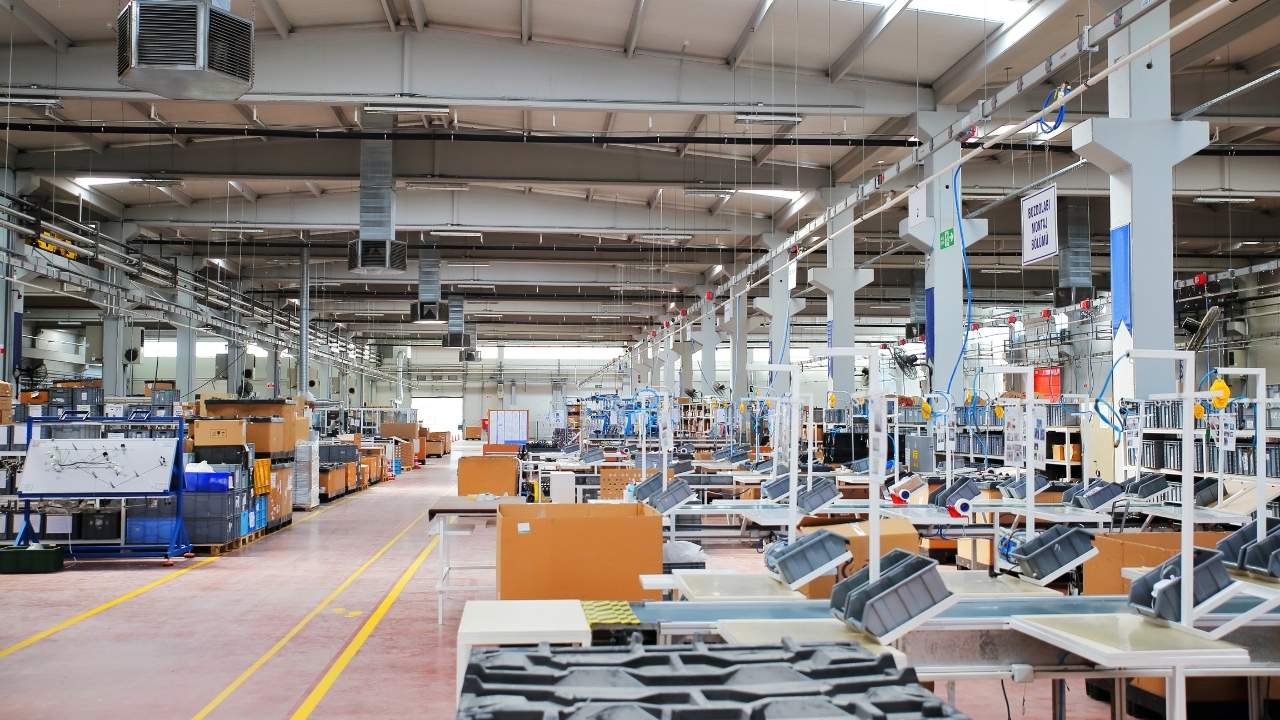It is common for companies to focus more on daily operations and overlook long-term fixed asset inventory- tangible things like machines, vehicles, furniture, and technology that last for years. But when profits shrink or tax season starts, poorly managed long-term assets can lead to big headaches.
The same thing happened with John, a manager at a small factory. Near tax time, John dealt with a huge machine breakdown. Rushing to list assets for taxes, he saw they had never set up proper long-term asset tracking. Now they risked losing money from downtime and tax fines for wrong filings.
Stories like this demonstrate why a detailed inventory of long-term fixed assets is vital for any business to thrive. Simply put, long-term fixed assets are major business items expected to last years, not items to resell quickly. In this article, we explain what long-term assets are, why monitoring them matters, and the best ways to manage them smoothly.
What are Long-Term Fixed Asset Inventories?
Long-term Fixed Asset Inventories refer to big, tangible things a business uses for operations rather than sales. Some common examples:
- Land, buildings, offices
- Machinery, equipment, tools
- Furniture and fixtures
- Vehicles and transportation
- Computers and Hardware
Unlike short-term assets like inventory or accounts receivable, long-term assets provide value for multiple years. But their value decreases slowly over time through depreciation – a cost reflecting the expected lifetime. Tracking depreciation shows the real current value as assets age.
Now that we know what these assets are, let’s review why keeping close tabs is so crucial.
Why Inventory Management Matters
Here are a few key reasons all businesses must actively track long-term Fixed Asset Inventories:
Accurate Financials
Good records are essential for financial reporting that values assets properly and avoids audit issues.
Better Smoother Operations
Knowing when assets need replacement or repair helps limit downtime and lost revenue.
Lower Risks and Legal Issues
Complete documentation is needed for insurance claims. It also prevents tax penalties.
Let’s explore the key steps to manage fixed inventory long-term assets.
Creating an Asset Inventory
The first step is listing all assets with details like:
- Asset name and description
- ID number
- Type – vehicle, computer, etc.
- Physical location
- Purchase paperwork
- Purchase and installation dates
- Original cost and depreciation schedule
- Condition and expected lifespan
- Repair history
This data enables accurate tracking as assets move or get replaced. It also allows physical inventory counts.
Choose a system to organize the information that meets your needs:
- Paper files work for very small inventories but get complex fast.
- Spreadsheets are accessible but difficult to collaborate on.
- Software solutions allow instant visibility but have higher costs.
No matter the system, information must stay current as assets change. Staff need training to sustain it amid shifting roles.
Best Practices for Smooth Management
Conduct Regular Verification
Perform annual or quarterly physical inspections of assets to confirm data accuracy. This ensures nothing is missing, out of service for repair, or differs from recorded details like location. Counts should be done per established procedures like checking model numbers or scanning asset tags. Verify a sample of low-value items instead of every single small asset. Investigate and update any inconsistencies found right away.
Process Updates Promptly
Log changes in status like asset transfers, disposals, or additions as soon as possible. This could mean creating disposal forms for broken equipment or filing purchase requests for new computers. Record service visits for maintenance or damage. Tracking asset movement is critical – update locations if an item is relocated. Timely updates prevent losing assets or misstating financial records.
Analyze Needs Frequently
Reassess lifespans annually to plan replacements or refurbishments. Also, review usage to reveal underutilized assets. Periodic analysis maximizes the value derived from assets while right-sizing expenses. It also signals when more capacity is needed for growth. Evaluating software platforms ensures they still meet evolving business needs.
Secure Assets Appropriately
Implements safeguards proportional to asset value and risks. Use locks, alarms, and camera surveillance for high-value items. Maintain visitor logs to restrict access. Engrave or tag assets with identification details to deter theft. Define authorized usage guidelines for portable assets taken off-site. Formal check-out procedures create accountability. Keep sensitive data secure on hardware like encrypted laptops.
Train Staff Continuously
Conduct sessions on what assets constitute, why inventories matter, and what documentation is expected. Ensure everyone understands processes like performing counts, handling transfers, or recording new purchases. Review roles in safeguarding assets. Refreshers help sustain institutional knowledge despite employee turnover.
By adopting these asset inventory best practices, businesses can optimize financial, operational, and risk outcomes for the long run. What questions do you still have on this important topic? I’m happy to provide any clarification or additional examples on how to establish a robust asset-tracking system tailored to your needs.
Manage Fixed Assets Effectively with Versa Cloud ERP
Streamlining asset management may seem daunting, but technology can simplify the process. Versa Cloud ERP offers customizable fixed asset inventory tools scaled to your business needs and budget. Versa’s robust & affordable solutions centralize tracking, forecasting, accounting, reporting & much more in an integrated all-in-one system so you can optimize assets with ease.
By scheduling a free tailored demo, you can explore features like barcode scanning equipment, generating customized reports, and creating self-service portals. Versa’s asset management experts will evaluate your workflows to recommend a system that matches your requirements and growth plans. Leverage the latest cloud innovations to unlock efficiencies across accounting, maintenance, taxes, and more with Versa Cloud ERP. Book a consultation today to learn how a purpose-built solution can alleviate documentation headaches, providing the visibility and control vital for using assets as a strategic advantage.
Q&A’s
Q: What are some key details that must be tracked for each fixed asset?
A: Vital details include purchase date, cost, location installed, asset identification number, classification, useful lifespan, depreciation method, maintenance schedule, condition at last inspection, etc.
Q: When should a fixed asset be removed from inventory?
A: Assets should be removed when retired, sold, terminated (end of lease), permanently transferred to another location, scrapped, lost, stolen, or destroyed beyond repair or use.
Q: How often should physical verification and inventory updates occur?
A: Best practice is partial physical verification quarterly, and full inventory checks at least annually. Documentation should occur for any changes as they take place.
Q: What technologies help manage fixed asset inventory?
A: Asset management software, RFID tagging, barcode scanning, enterprise resource planning (ERP) systems with fixed asset modules, and advanced data analytics offer automation for tracking and insights.
Q: What are the consequences of poor fixed asset inventory management?
A: Inaccurate financial statements, incorrect taxes, and compliance penalties, suboptimal asset utilization, inability to insure or recover lost items, ordering obsolete or redundant assets, and overall enterprise risk amplification over the long term.
Empower your business with the knowledge to navigate the realm of an Integrated ERP solution, specifically tailored to inventory and warehouse management and POS needs. Gain insights, streamline processes, and propel your financial management to new heights with this comprehensive guide
With Versa Cloud ERP’s Implementation guide learn how a business can ensure a successful ERP Solution Implementation. Navigate the complexities of implementation with confidence!
A Small Business in the modern day with Omnichannel Retail is complex and requires resources to deliver on its goals and achieve its full potential. To create a small business success story business owners need an ERP Solution that grows with them.
Effectively manage your financials, accounting, inventory, production, and warehouse management workflows with our award-winning ERP.
Let Versa Cloud Erp’s do the heavy lifting for you.
[widget id=”custom_html-40″]
[widget id=”custom_html-42″]
[widget id=”custom_html-30″]
Do Business on the Move!
Make your businesses hassle-free and cut the heavyweights sign up for the Versa Cloud ERP today!!
Join our Versa Community and be Future-ready with us.
[widget id=”custom_html-20″]






